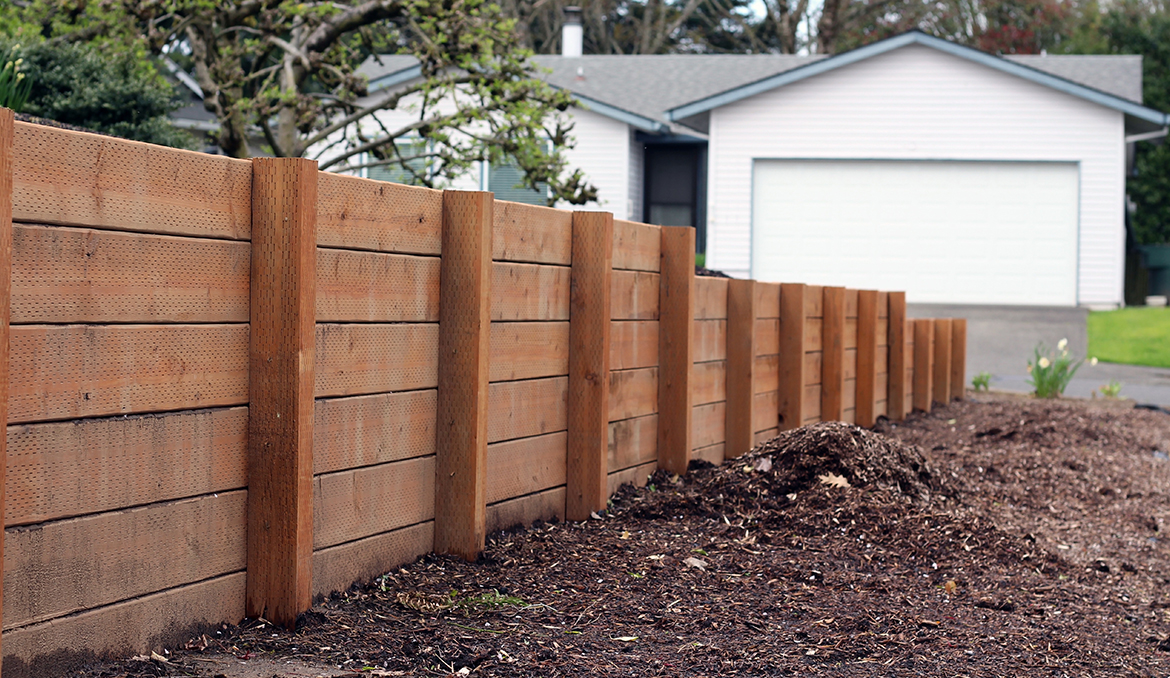Retaining walls are essential structures. The walls are built in a way that redistributes the pressure that comes from the sloping ground. A variety of materials are used to build the walls, such as concrete, steel, stone, brick, composites, wood and even glass. Retaining walls on residential properties are often constructed to hold back the soil from a hillside, many times to create more usable space. Other uses for a retaining wall include stopping soil from sliding away from a foundation or from damaging the landscape.
So which retaining wall is best suited to you? Check out these top 4 retaining wall types:
1. Gravity Walls
Need something small? Then go for a gravity retaining wall. A gravity wall is constructed from concrete, stone or even brick masonry. It will have a thicker base and a slight backwards lean. We call this ‘battering’, to keep the wall sturdy. If you notice the wall starts to bend over time, it will need replacing.
These structures are best left to an expert landscaper, as precise measurements and a myriad of materials are needed.
2. Anchored Walls
Anchored walls are restraining walls constructed using cables (usually extremely strong steel) that are anchored into the soil or rock behind the wall. They are used when the wall cannot be built strong enough to restrain the load. Constructing an anchored wall is an extremely complex process.<br.
If you need to hold up a heavy bank of earth, an anchor retaining wall is ideal.
3. Sheet Piling Walls
Need to support soft soil? Then a sheet retaining wall will work best for you.
Sheet piling walls, which can be made from wood, vinyl or steel planks, are used in places where the space is tight and the soil is soft. The planks are driven into the ground. Like anchored retaining walls, piling retaining walls use cables to tie together the wall and anchor.
4. Cantilever Walls
Cantilever walls are used to hold back a large amount of soil. They are made with steel-reinforced concrete that rest on slab foundation. Cantilever walls convert horizontal pressures from the soil to vertical pressures on the ground.
A cantilever retaining wall uses a T or L shaped footing – or poles – which are firmly inserted into the earth to provide a strong support.
Choosing Retaining Wall Materials
Determining what type of retaining wall construction to use will depend on the type of soil that needs to be retained, the kind of soil the wall will be built on, how much space is available for the wall and the degree of slope above and below the structure. The location of pipes and service lines can also be a factor in construction.
Just as there are various retaining wall structures, you also have a few options when it comes to the materials used to built it. These include:
- Masonry: Durable and sturdy, masonry – made from a concrete, stone or brick block – are a popular option. However, they can be expensive and tricky to maintain and repair.
- Poured concrete: Stronger still, poured concrete offer superior support. Best of all, you can stamp or stain the concrete to create custom patterns.
- Timber: Easy to install, timber walls have a lifespan of a decade or two and are very inexpensive.
- Concrete blocks: If you’re on a budget and don’t want to fuss with repairs, interlocking concrete blocks is a wise choice.





